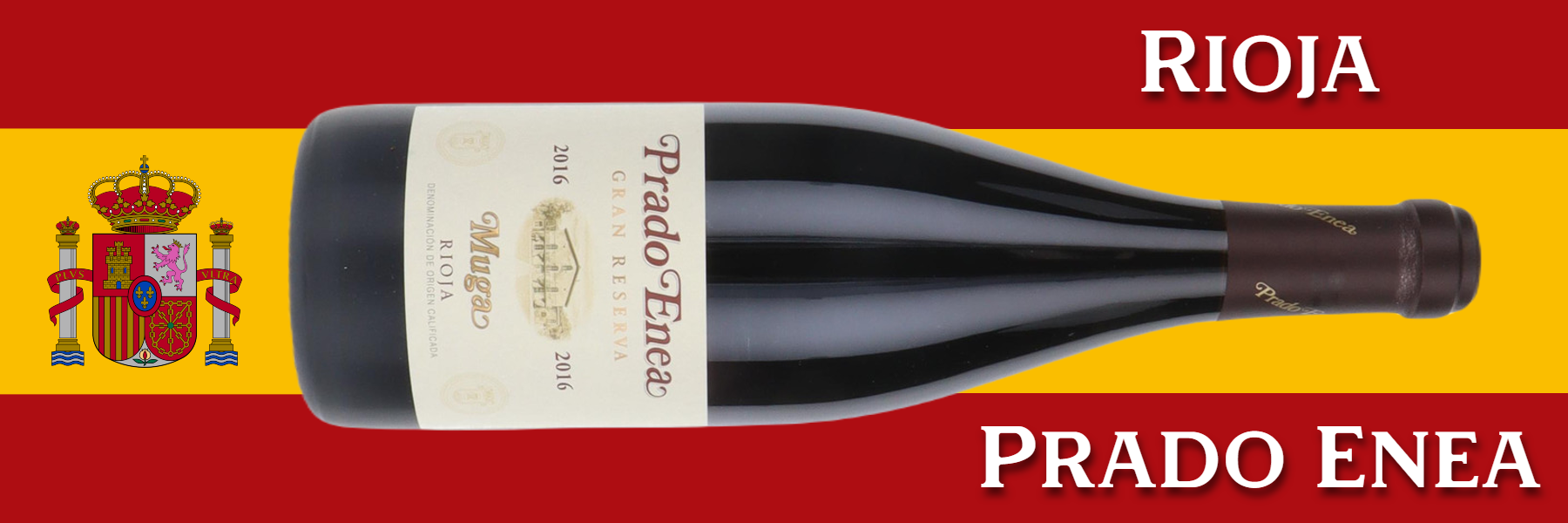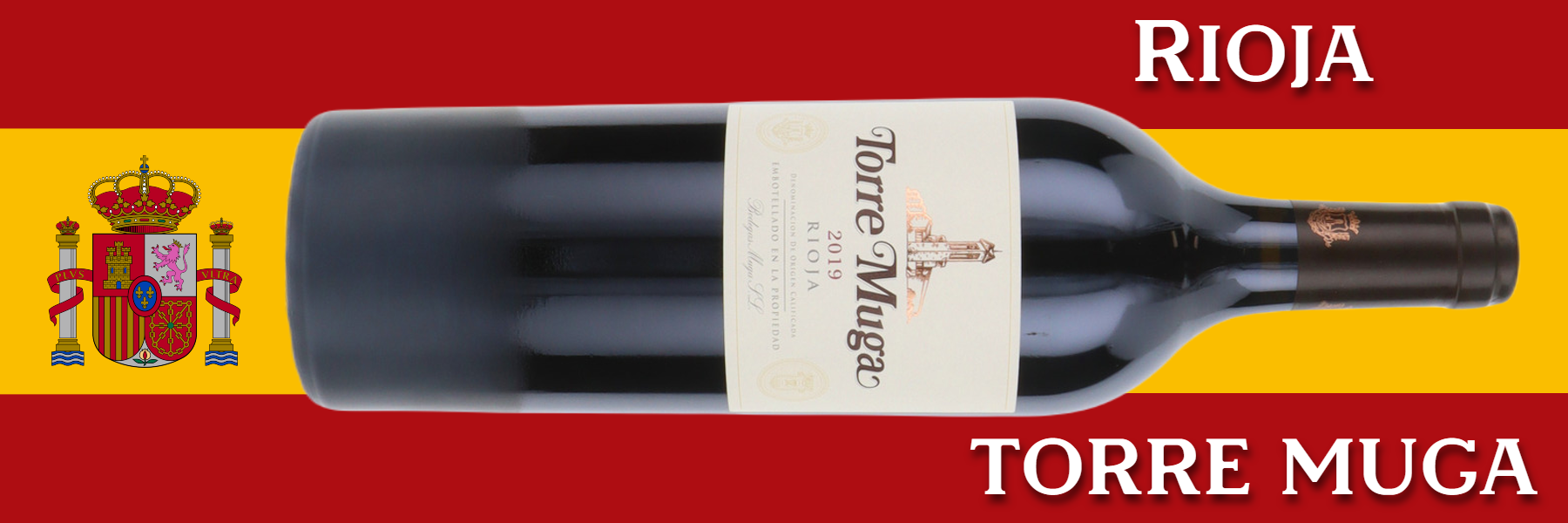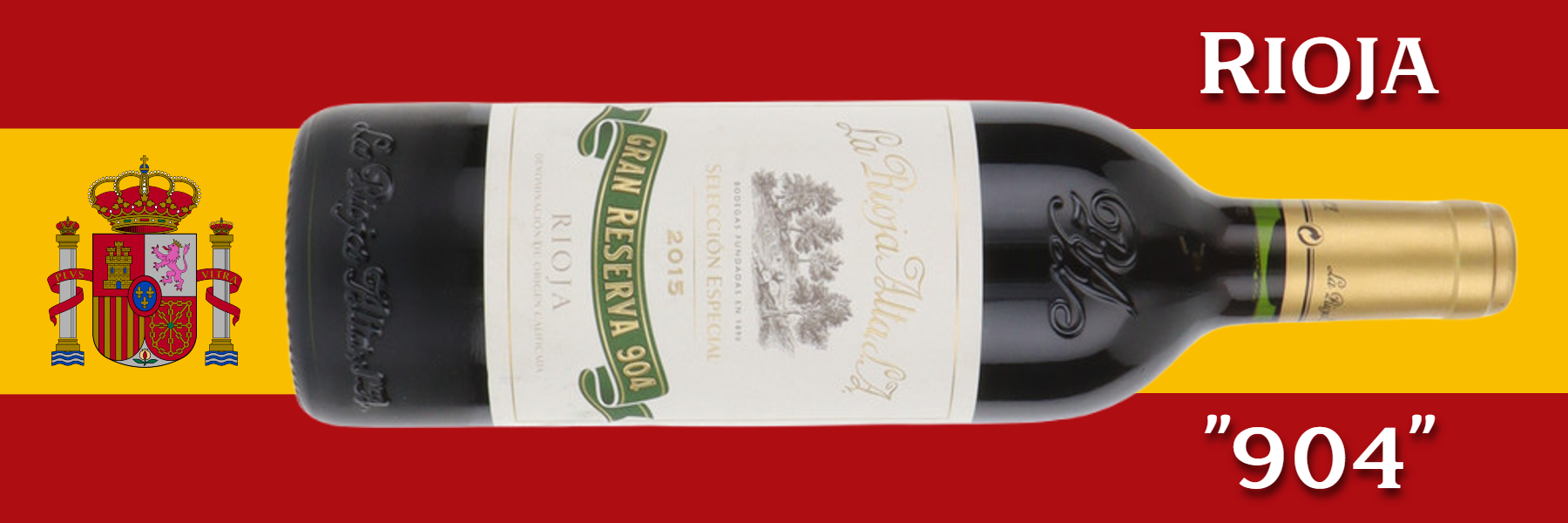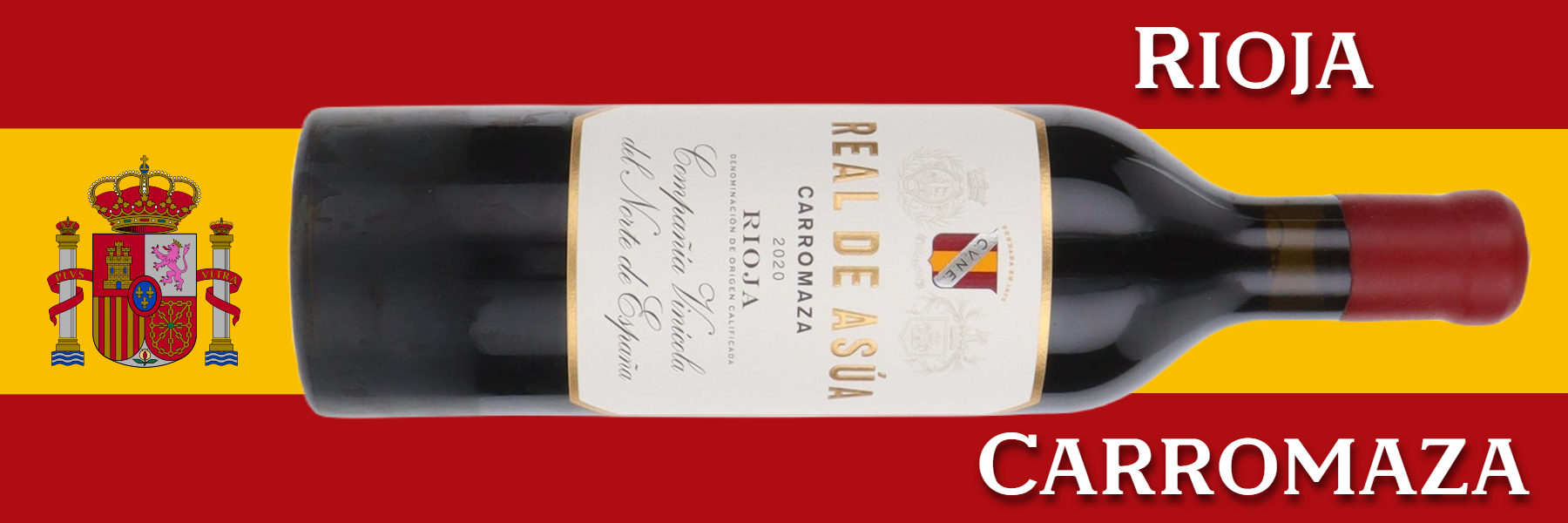Now, you might be surprised to know that #Rioja is my favourite red wine. I've been to the region a few times over the years and visited some of the top producers along with many others who "make up the numbers". Some visits were memorable in many ways. From cobweb-covered, traditional cellars to squeaky-clean, modern wineries. From art-inspired bodegas to cringe-worthy Welsh singing (yes, really!)... it all happens in Rioja.
The Rioja wine region stands as one of the most celebrated and historically rich wine regions in Spain, and indeed the world. Rioja's wines are synonymous with elegance, complexity, and longevity, particularly its red wines based on Tempranillo, often blended with Garnacha, Graciano, and Mazuelo. Over centuries, Rioja has evolved into a powerhouse for red, white, and rosé wines, with its distinctive style shaped by its geography, history, and meticulous winemaking traditions.
Most producers want to qualify for the Rioja DOCa designation (using the age/style categories of Joven, Crianza, Reserva and Gran Reserva), and their wines reflect the inherent characteristics of this, but the greatest wines are often rule breakers. However the rules are applied, or not, quality shows in the glass, and I recommend trying the best you can afford to experience the sublime, savoury richness of an aged, mature Rioja. You won't be sorry!
What Makes Rioja Wines Special?
Rioja wines stand out in the global wine landscape due to a harmonious balance of tradition, innovation, and terroir, making them truly unique. The region's historical commitment to quality, combined with modern winemaking techniques, a diverse climate, and distinctive grape varieties, gives Rioja its unmistakable character.
Rioja’s enduring appeal comes from its ability to blend tradition with innovation, ensuring that while the wines maintain a sense of heritage, they are also adaptable to modern tastes and techniques.
Traditional Practices:
Historically, Rioja has been known for long-aged wines, particularly in American oak barrels, which impart characteristic flavours of vanilla, coconut, and sweet spices. This is most prominent in Gran Reserva wines, which undergo extended ageing both in barrels and bottles before release. These wines develop complex tertiary flavours, such as leather, tobacco, dried fruits, and earthy nuances, resulting in a profound, mature expression of Tempranillo and its supporting grapes. The traditional method of ageing for many years before release has been a hallmark of the region, especially with producers like López de Heredia, La Rioja Alta, and CVNE maintaining these practices for over a century.
Innovative Techniques:
While respecting tradition, Rioja has also embraced innovation. In the last few decades, modern winemakers have sought to craft wines that are fresher, more fruit-forward, and terroir-driven. A shift toward French oak barrels instead of the classic American oak, or a combination of both, is common, giving the wines a more subtle oak influence and a focus on preserving the natural fruit flavours. Producers like Artadi, Benjamín Romeo, and Telmo Rodríguez exemplify this modern Rioja style, concentrating on single-vineyard expressions and focusing on minimal intervention winemaking to highlight the terroir.
The introduction of categories like Vino de Pueblo (village wines) and Viñedo Singular (single vineyard wines) is another innovation that reflects the growing desire to showcase Rioja's unique terroirs more explicitly, echoing the focus on origin and place seen in regions like Burgundy. These wines are often produced in smaller quantities and from meticulously tended vines, reflecting specific microclimates and soils.
Climate and Terroir:
Situated in the north of Spain, to the west of the Pyrenees, following the course of the River Ebro, Rioja is divided into three subregions—Rioja Alta, Rioja Alavesa, and Rioja Oriental (formerly Baja)—each contributing distinct characteristics to the wines produced.
1/ Rioja Alta
Located in the western part of Rioja, Rioja Alta benefits from a cool Atlantic influence, resulting in a long growing season that helps preserve acidity and structure in the wines. This area produces some of the most elegant and age-worthy wines, with a focus on finesse and balance. The soils in Rioja Alta are predominantly clay-limestone, which is ideal for growing Tempranillo, and the cooler temperatures allow for the slow ripening of grapes, ensuring fresh acidity and vibrant fruit flavours.
2/ Rioja Alavesa
Situated to the north, this subregion shares many similarities with Rioja Alta in terms of climate, but it also benefits from the chalky soils that lend a distinct minerality to the wines. The higher elevation and proximity to the Cantabrian Mountains provide ideal conditions for the production of fresh, high-acid wines, particularly from Tempranillo. The Alavesa is known for producing some of the most complex and terroir-driven wines in the region, often showing a beautiful balance between fruit and earthy, savoury notes.
3/ Rioja Oriental
In contrast, Rioja Oriental (formerly Rioja Baja) experiences a warmer, more Mediterranean climate, which leads to wines with higher alcohol and riper fruit flavours, especially from Garnacha. Traditionally, this area was known for producing robust, fruit-forward wines with less ageing potential, but with advancements in viticulture and winemaking, Rioja Oriental is now producing more balanced wines with greater finesse. Garnacha thrives in the hot, arid conditions here, offering rich, bold, and expressive wines, particularly in warmer vintages.
Microclimates and Elevation
The diversity within these subregions also stems from differences in elevation and proximity to the Ebro River. Vineyards located at higher altitudes (up to 700 meters in Rioja Alta and Rioja Alavesa) tend to produce grapes with better acidity and a more gradual ripening process, which is essential for the creation of age-worthy wines. Vineyards closer to the Ebro River experience more moderate temperatures, benefiting from the river's cooling effects, while those farther away in Rioja Oriental endure hotter conditions, which are ideal for bolder styles of wine.
Signature Grape Varieties:
Rioja's reputation is built primarily on its red wines, although white and rosé styles are also increasingly recognised for their quality. Rioja wines are made from a selection of native grape varieties, each contributing different attributes to the blend.
Reds
1/ Tempranillo
This is Rioja’s flagship grape and accounts for the majority of plantings in the region. Known for its versatility, Tempranillo forms the backbone of many Rioja wines, particularly in Gran Reserva and Reserva wines. It brings flavours of red fruits (cherry, plum, and strawberry) in youth, and with ageing, develops into complex layers of dried fruit, tobacco, leather, and spice. Tempranillo thrives in the cooler climates of Rioja Alta and Rioja Alavesa, where it maintains a refreshing acidity, which is key to producing age-worthy wines.
2/ Garnacha (Grenache) Garnacha is often blended with Tempranillo to add body, fruitiness, and alcohol. In the warmer climate of Rioja Oriental, Garnacha produces wines with rich, ripe fruit flavours (raspberry, strawberry) and a soft, round texture. It is particularly valued for rosé production in Rioja and can also bring a luscious, fruit-forward profile to red blends.
3/ Graciano This grape is typically used in small amounts to add acidity, structure, and longevity to Rioja blends. Its high tannin content and strong aromatic profile (spice, dark fruit, floral notes) make it a valuable component in Gran Reserva wines, where it enhances complexity and balance.
4/ Mazuelo (Carignan) Mazuelo brings deep colour, tannin, and acidity to blends, making it an important grape for enhancing the structure of Rioja wines, particularly those designed for long ageing. It also provides earthy, spicy notes, complementing the fruitier components of Tempranillo and Garnacha.
A rare variety making a comeback in recent years is Maturana (in both its red & white forms)
Whites
While Rioja is best known for its reds, its white wines are also gaining prominence, particularly those made from native varieties.
1/ Viura (Macabeo) The most widely planted white grape in Rioja, Viura produces fresh, crisp wines with floral and citrus notes. When aged in oak, it can develop a rich, creamy texture with complex flavours of nuts, honey, and dried fruit, as seen in Gran Reserva Blancos. Viura is versatile, capable of producing both young, vibrant wines and more complex, aged whites.
2/ Malvasía Known for its aromatic qualities, Malvasía is often blended with Viura to add richness and floral complexity to the wine. It can enhance the body and mouthfeel, contributing flavours of stone fruit, herbs, and honey.
3/ Garnacha Blanca This white variant of Garnacha is becoming increasingly popular in Rioja, adding weight and texture to white blends. It provides ripe fruit flavours, such as pear and apple, along with a slight floral character.
In conclusion, Rioja’s wines are special because of the region's ability to skillfully combine its long-standing traditions with modern innovations, crafting wines that respect their history while continually evolving. The diverse climate and terroir, coupled with the unique character of native grape varieties, ensures that Rioja remains a region that produces wines of incredible diversity, complexity, and quality, capable of long ageing and immense enjoyment.
Why should I pay more for my Rioja?
Prices for the region's wines vary enormously, with many brands finding it difficult to shift their stocks of typical "average" quality no matter where they are pitched in the marketplace. The better wines, though more expensive, are worth the money when compared to the likes of Bordeaux and Burgundy. A £25-£30 Rioja, for example, probably equates to many a £50 bottle from France and £100 Rioja is just going to be outstanding! A major pricing factor is the cost of keeping the wines off the market while they mature in barrel. Most other wines around the world do not get the chance to develop and mature in perfect conditions at the winery and are released much more quickly.
Gran Reserva wines are among the crown jewels of Rioja, with their strict ageing requirements that bring out the depth and complexity unique to this region. Meanwhile, more recent innovations such as “vino de pueblo” (village wines) and single vineyard wines aim to reflect the terroir of smaller, distinct parcels, offering a more nuanced expression of place.
Gran Reserva: The Definition of Ageing
Gran Reserva wines must age for at least five years, with a minimum of two years in oak barrels and three in the bottle. This extended ageing results in wines that are both mature and complex, often developing tertiary aromas and flavours like leather, tobacco, and dried fruit.
As per DOCa Rioja regulations, Gran Reserva wines are only produced in excellent vintages, using the best grapes from a harvest. The ageing process must include at least 24 months in oak barrels and a further 36 months in bottle before release. Traditionally, American oak has been the preferred choice, although many producers now use a combination of American and French oak for added complexity.
Vino de Pueblo and Single Vineyard Wines:
In recent years, there has been a shift toward identifying the origins of wines even more specifically. Village wines (vino de pueblo) and single vineyard wines (viñedo singular) are part of a movement towards terroir-driven winemaking, which emphasises the geographical and climatic differences between vineyards, resulting in wines that are more distinct in character and reflective of their unique environment.
The recent introduction of the Viñedo Singular (single vineyard) designation by the DOCa allows producers to showcase wines from specific vineyards, provided they meet strict requirements. Vines must be at least 35 years old, and the vineyard's name must appear on the bottle. The wines must also undergo a longer ageing process in barrel and bottle than standard wines. Additionally, yield limits are more stringent, ensuring concentration of flavour.
Vino de Pueblo wines, while not subject to the same ageing requirements, aim to highlight the unique characteristics of specific villages or municipalities within Rioja. These wines are often less structured but exhibit a clear expression of their terroir.
The Greatest Producers and Their Wines: Icons of Rioja
It can be argued that most of the greatest Rioja are red, but do look out for the rare Gran Reserva whites (Blanco) and even rarer Gran Reserva rosé (Rosado).
Below are just a small selection of "wow" wines from both the traditional, established houses and modern upstarts. All with critics' scores of 95-100/100!
- López de Heredia: Tondonia Gran Reserva (Red, White, Rosé) and Bosconia Gran Reserva wines
- Artadi: El Pison, El Carretil, San Lazaro, La Hoya, Grandes Anadas
- CVNE: Real de Asúa Carromazo, Contino Gran Reserva, Imperial Gran Reserva, Vina Real Reserva Especial, Corona Gran Reserva Blanco
- Telmo Rodríguez: Las Beatas, Tabuerniga
- La Rioja Alta: Gran Reserva 890, 904 Selección Especial
- Marqués de Riscal: Gran Reserva
- Marqués de Murrieta: Castillo Ygay Gran Reserva Especial
- Benjamín Romeo: Contador
- Muga: Aro, Torre Muga, Prado Enea
- Artuke: La Condenada
- Viñedos de Páganos: La Nieta
- Roda: Cirsion
As in all things in life, good things don't come cheap, so be prepared to max out your credit card, or dive under the mattress to recover your stash of hidden cash to slake your thirst for these extra special bottles.
Oh, how I'd love to stock all of these beauties at Frazier's. It would make my day, even though my budget doesn't stretch to actually drinking them on a regular basis.
I can but dream.





